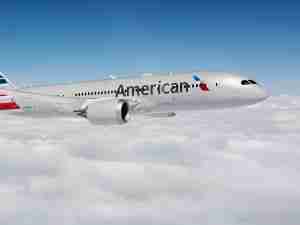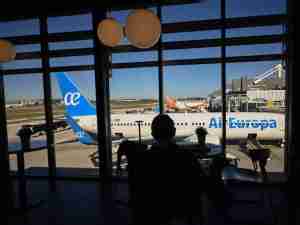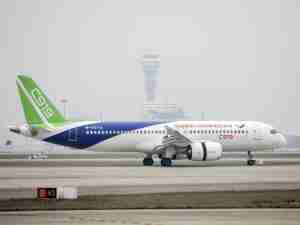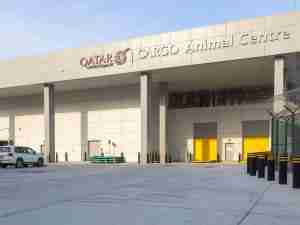US crash investigators accused Boeing Co. officials of failing to cooperate in a probe of how a panel flew off a 737 Max 9 in January in a highly unusual rebuke.
Boeing shot back hours later on Wednesday, saying it had since provided the National Transportation Safety Board with names of employees who may have performed critical work on the jet. The planemaker also stressed it was doing everything it could to help with the probe.
By the end of the day, however, both sides were signaling a stunning new detail in what led to the Jan. 5 failure: The possibility that no documents exist at Boeing to explain how the airplane left its factory missing bolts that would have prevented the accident in the first place.
“With respect to documentation, if the door plug removal was undocumented there would be no documentation to share,” Boeing said in a statement.
The tit-for-tat capped a dramatic day of testimony at a Senate Commerce Committee hearing at which NTSB Chair Jennifer Homendy said her team hadn’t received all the documents and information it had sought from Boeing.
“It’s absurd that two months later we don’t have that,” Homendy told the committee.
The NTSB said on Feb. 6 that forensic evidence and photos of work on the nearly new plane indicated four bolts meant to hold a fuselage panel in place hadn’t been installed on the Max 9 when it was delivered from the factory. The Alaska Airlines jet suffered an explosive decompression above Portland, Oregon, after the panel, or door plug, covering an unused emergency exit, flew off mid-flight.
NTSB investigators haven’t been able to determine what led to the manufacturing lapse or other details of the work, Homendy said Wednesday.
“We have deep respect for the NTSB and the critical role they play in aviation safety,” Boeing said in its statement. “Since the first moments following the Alaska Airlines Flight 1282 accident, we have worked proactively and transparently to fully support the NTSB’s investigation.”
Transparency Vows
Homendy’s criticisms run counter to pledges of transparency by the US planemaker, which faces multiple probes and scrutiny from regulators, lawmakers and customers in response to the accident on an Alaska Airlines flight. Boeing and its chief executive officer, Dave Calhoun, have repeatedly vowed full cooperation with investigators at the NTSB and Federal Aviation Administration.
The safety board has voted to hold an investigative hearing on safety issues raised by the accident, spokesman Eric Weiss said after the Senate session. Such a hearing could also heighten the focus on the planemaker’s actions.
The agency hasn’t been able to obtain documentation from Boeing showing how the work was performed, Homendy said. The company has told investigators they can’t find it, Homendy said.
That information is consistent with earlier reports that Boeing workers used two record-keeping systems to track work and that may have led to confusion over how it was performed. Not having a record of work in the carefully documented world of aviation maintenance and manufacturing would be highly unusual.
Days after the accident, Calhoun addressed Boeing employees and said the company would approach the NTSB and FAA investigations “with 100% complete transparency every step of the way.” He has also vowed to change Boeing’s practices to bolster its safety culture.
Shares of the US planemaker were little changed in New York trading on Wednesday. They have declined 23% this year, the worst performance in the Dow Jones Industrial Average.
Employee Interviews
During the Senate hearing, Homendy said investigators are focused on 25 Boeing workers assigned to 737 doors. The company hadn’t provided their names and the safety board hasn’t been able to interview them, she said.
“We’ve asked repeatedly for that information,” Homendy said. “It’s not for lack of trying.”
Hours later, Boeing pushed back, saying the request from NTSB for names of workers was “recent” and “we have now” provided the information to the agency. The company also said that it provided NTSB soon after the accident with the names of employees it believed would have relevant information.
“We have now provided the full list of individuals on the 737 door team, in response to a recent request,” the company said.
“We will continue to cooperate fully and transparently with the NTSB’s investigation,” the company said.
Using emails, texts and other information it has obtained, the NTSB believes the work on the 737 door panel occurred in mid-September. But investigators have yet to obtain more specific information, Homendy said.
An NTSB team is at the Renton, Washington, factory where the plane was built to conduct additional interviews this week, she said. A manager on the team that they believe performed the work has been out of work on medical leave, she said.
The NTSB also learned recently that three people who worked on the plane were not employees of Spirit AeroSystems Holdings Inc. and instead worked for contractors, Homendy said.
Senator Letter
Senator Maria Cantwell, the Washington Democrat who is chairwoman of the committee, said at the hearing that Boeing’s lack of cooperation is “beyond disappointing.”
“I thought that the CEO said that they would cooperate to the fullest,” Cantwell said. “So, it seems like this information is now stymieing your investigation, and it seems that it’s knowable, and that you should at least be able to talk to the individuals there.”
Later on Wednesday, Cantwell wrote Calhoun a letter to demand the company provide the NTSB with additional information within 48 hours.
Homendy also clarified that initial reports that bolts on other 737 Max planes weren’t properly tightened were not related to the failure on the Alaska Airlines plane. FAA officials told the NTSB that they involved other nearby bolts, but not the ones that allowed the door panel to fail, she said.
She also confirmed that forensic evidence on the door panel, which was recovered days after the incident, showed it had been moving on flights before it failed.
The US Justice Department is scrutinizing the incident, which could expose the company to criminal prosecution, Bloomberg reported Feb. 29.
The FAA is also investigating whether Boeing failed to comply with requirements that planes leaving their factories conform strictly to agency-approved designs. The agency has also bolstered its oversight of Boeing’s assembly lines, and barred the planemaker from increasing production rates until it’s satisfied that quality practices have improved.











